50 Hemiptera – Heteroptera – Aquatic Families
Nepidae
An entirely aquatic family, the Nepidae, or water scorpions, can fly as adults to disperse between water bodies. They are slow, underwater predators with two pairs of walking legs. The front pair of legs is modified to be raptorial. Water scorpions also have a long, posterior siphon for breathing air at the surface of the water, giving them their common name.
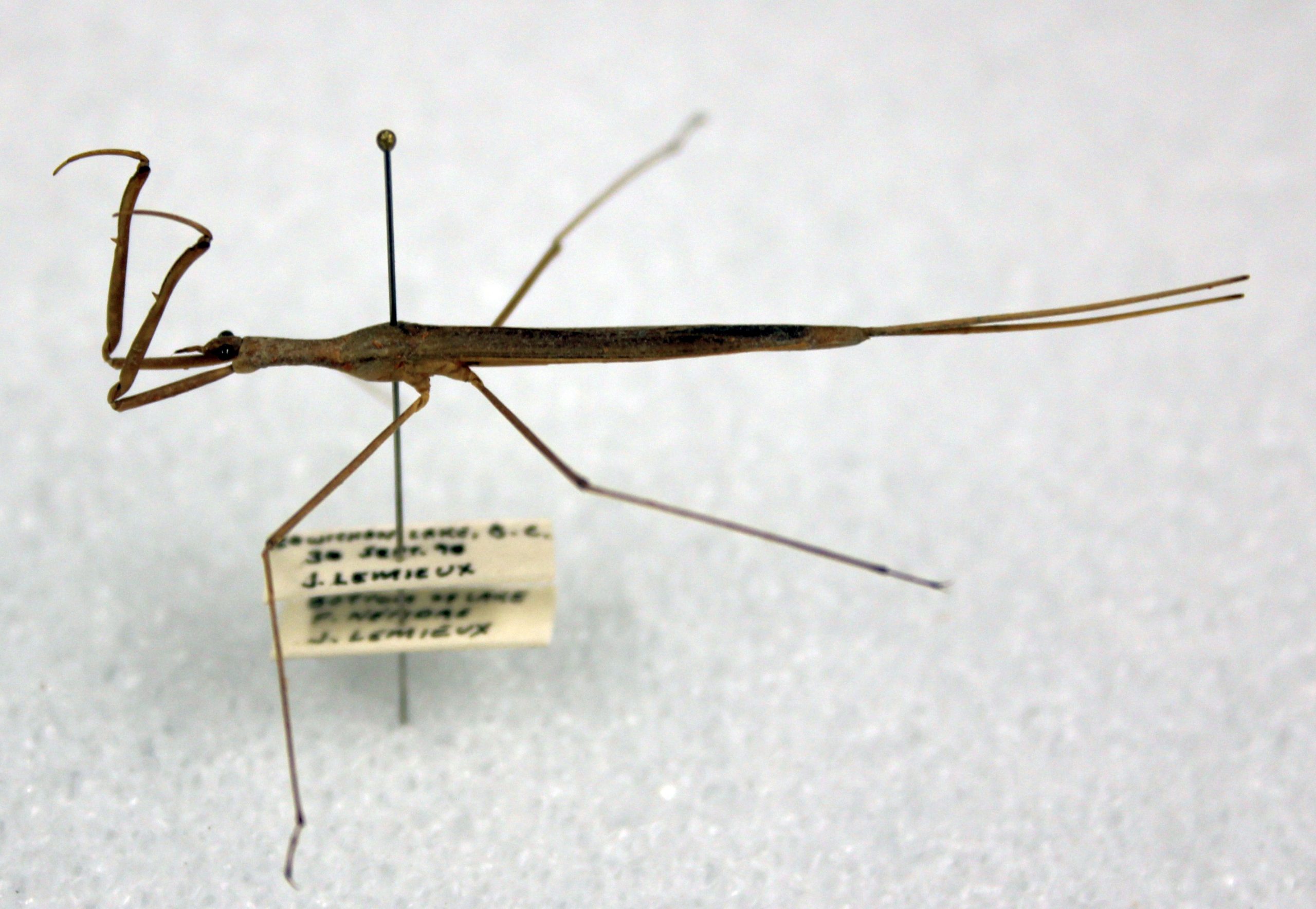
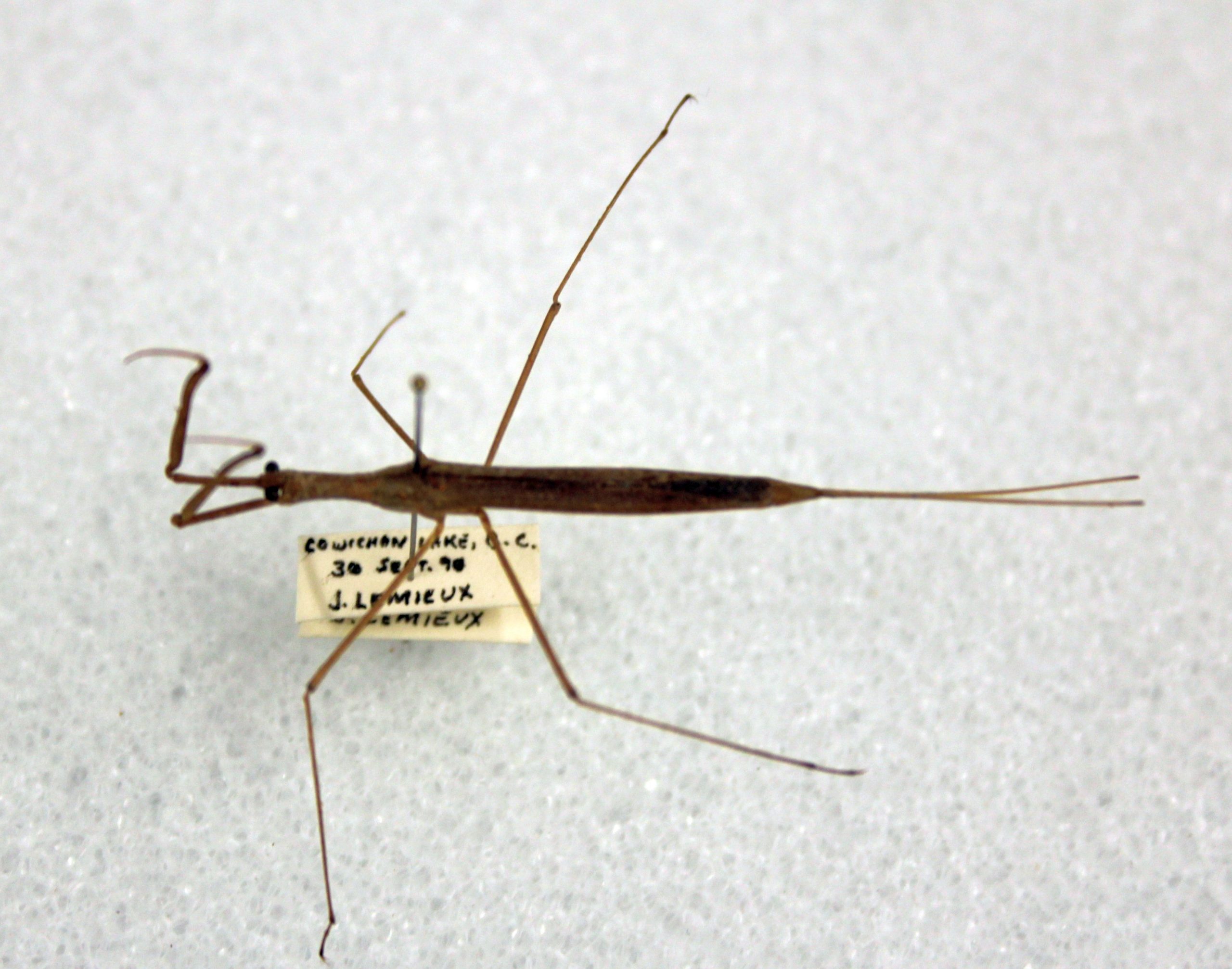
Belostomatidae
The Belostomatidae are also aquatic. They are large, aggressive predators, with swimming hind legs and raptorial forelegs. Their bite is quite painful so, if you catch one, handle it carefully!
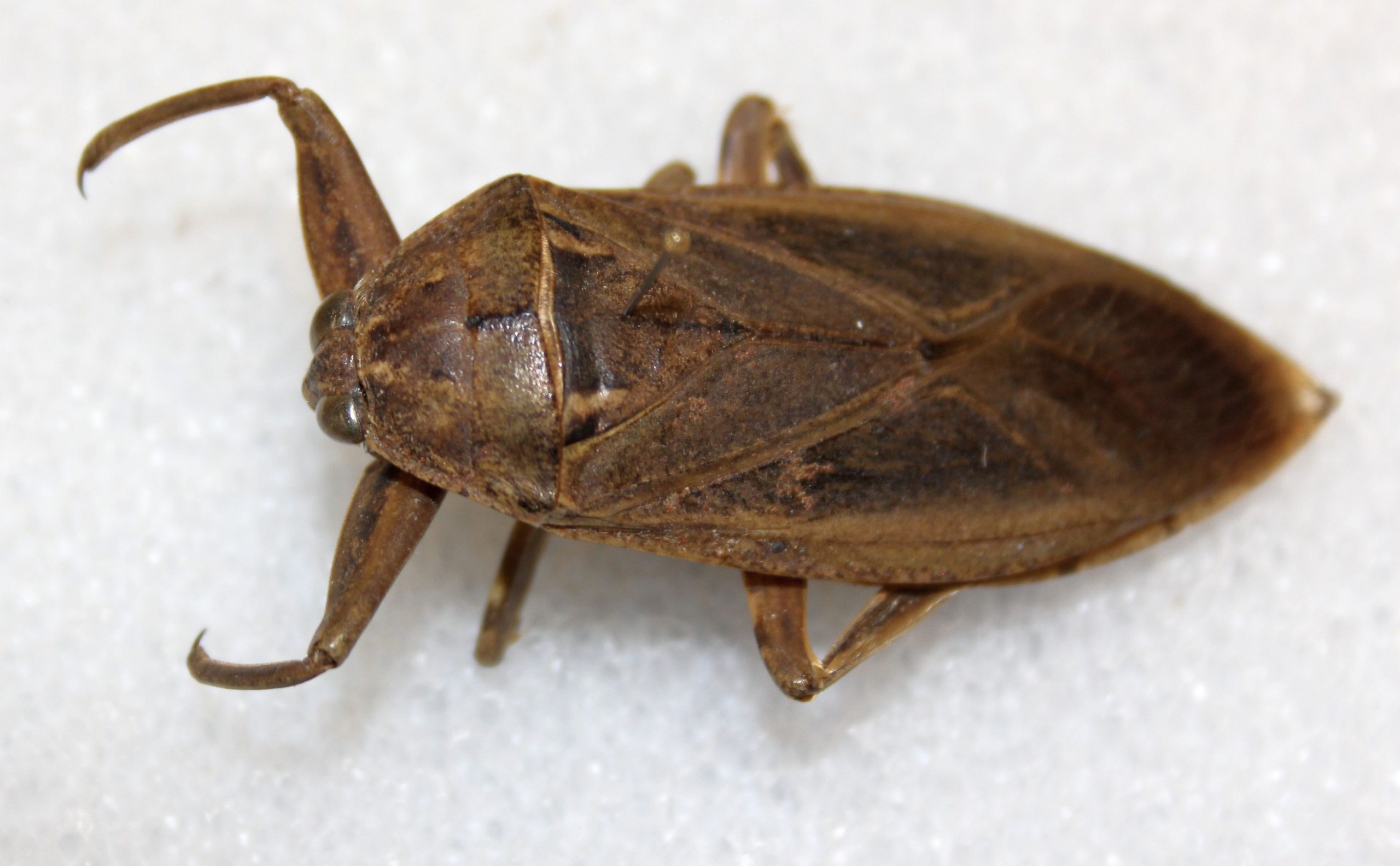
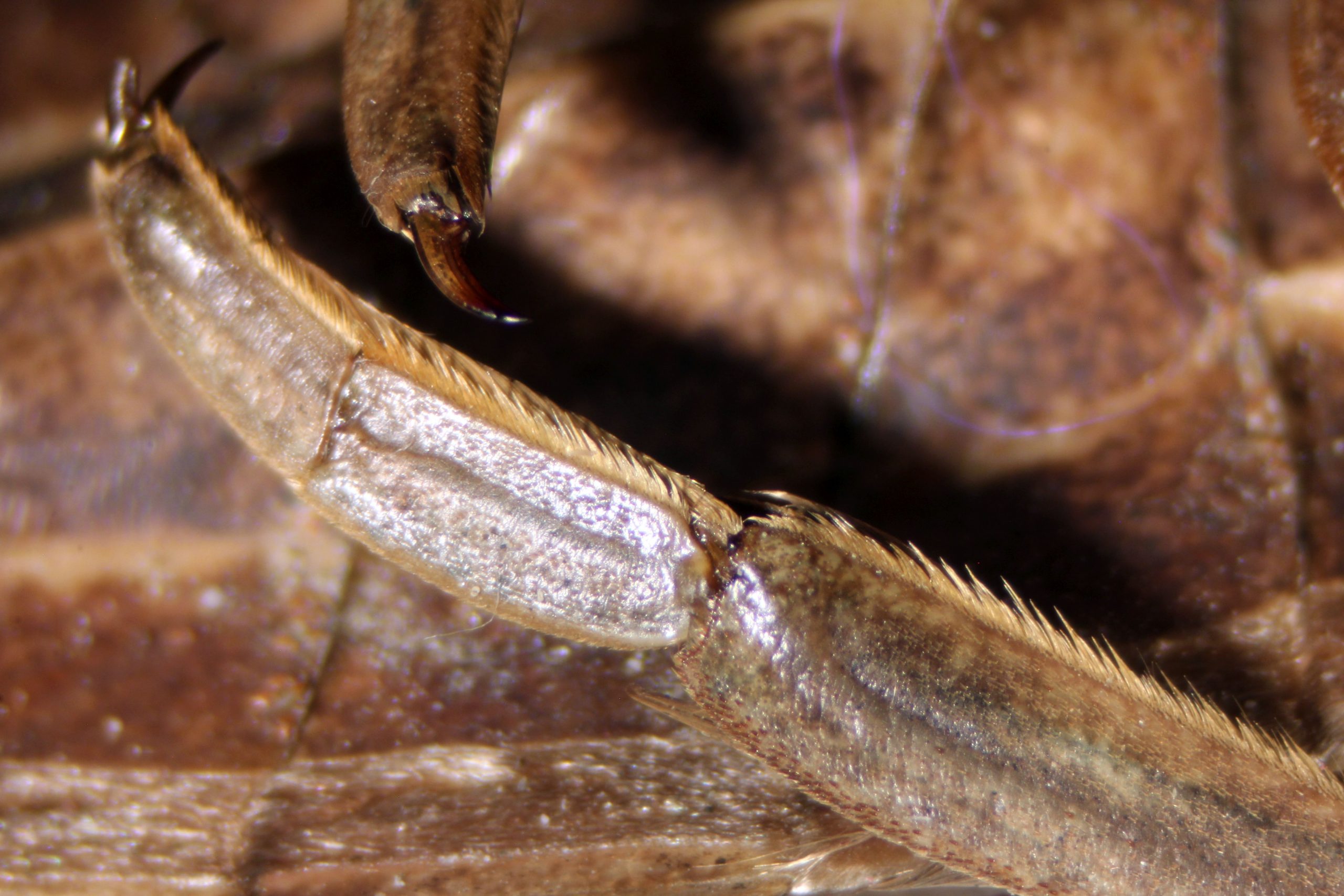
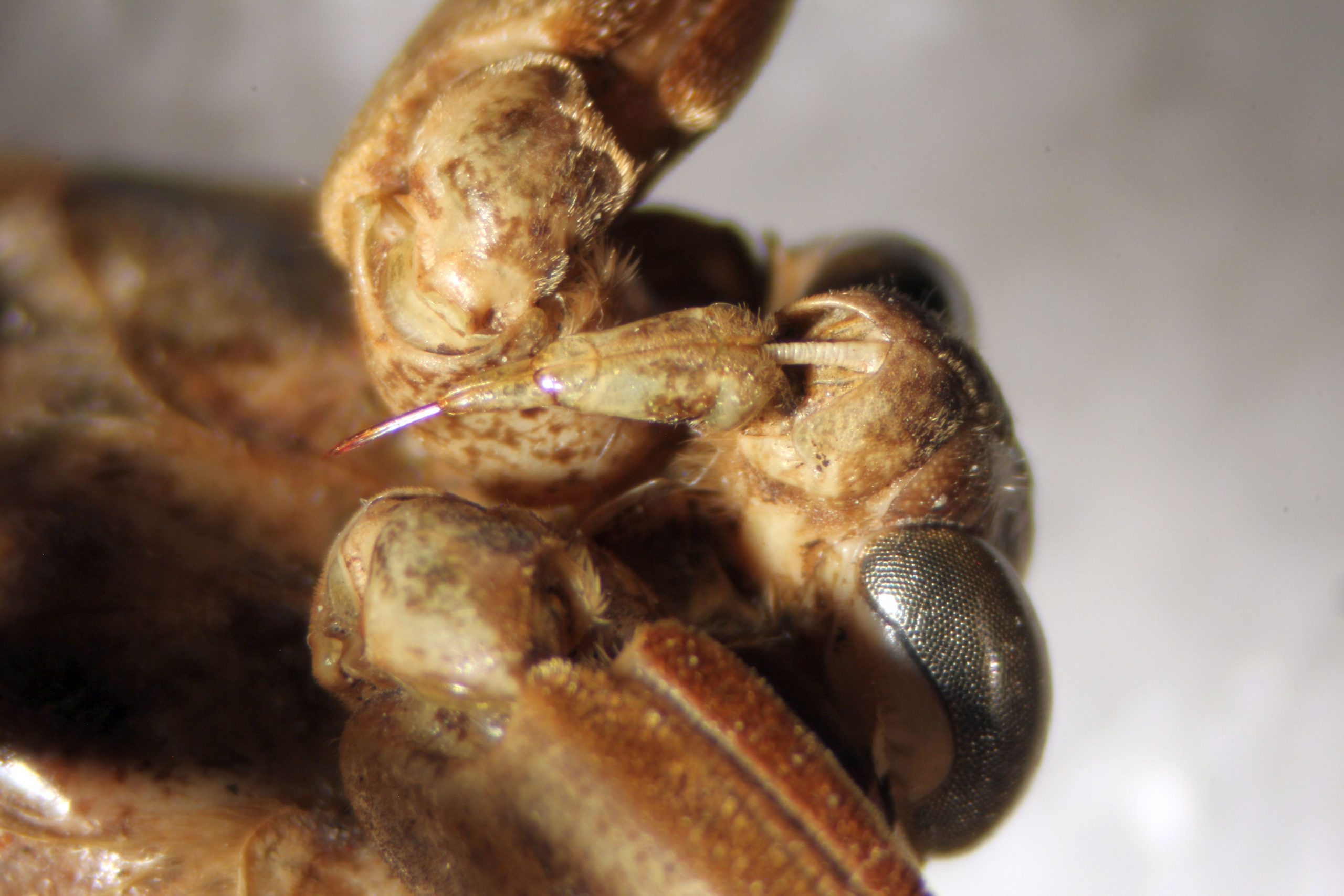
Corixidae
The next two families, the Corixidae and the Notonectidae, look quite similar. The Corixidae, or water boatmen, tend to be smaller than the Notonectidae. Corixidae are mostly detritivores or herbivorous on algae, and have scoop-shaped front legs for gathering food. Water boatmen swim upright, and have a dark notum with a pale or silvery sternum.


Notonectidae
Notonectidae, the backswimmers, are larger than Corixidae, and predatory. They swim upside down and their colouring is reversed: they have a dark sternum and a pale or silvery notum. Like Belostomatidae, they will bite in self-defense.

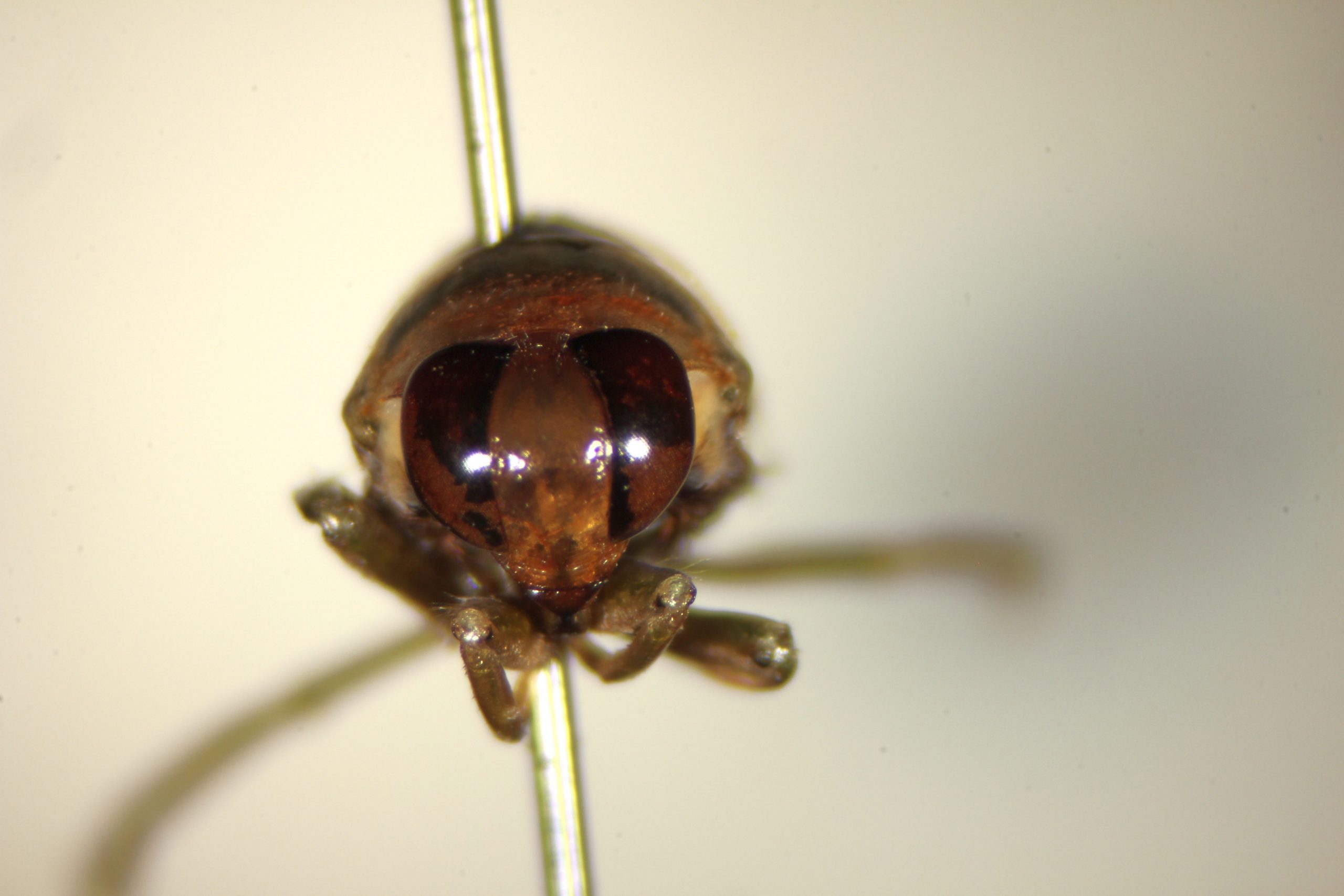
Gerridae
The Gerridae are commonly known as water striders or water skaters. You have probably seen these insects on the surface of local ponds. All members of this family are surface-dwelling predators or scavengers, with forelegs modified for holding food. They are very sensitive to vibrations (waves) on the surface of the water, and use them to find food and avoid predators. Their tarsal claws are set back from the tip of the tarsus, allowing them to walk on the water without breaking the surface tension. This family also includes the genus Halobates, five species of which are pelagic, living on the open ocean.
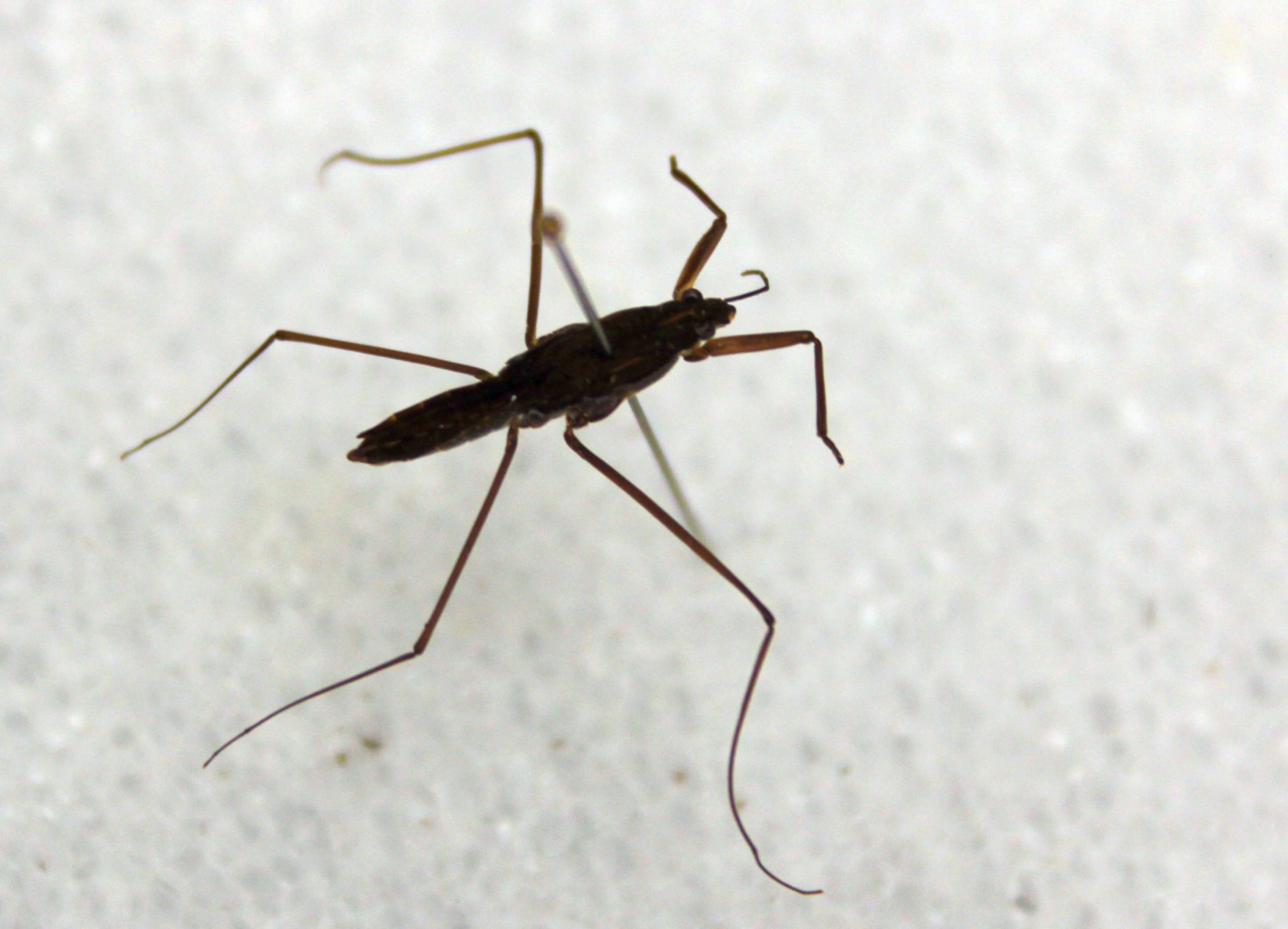



Feedback/Errata